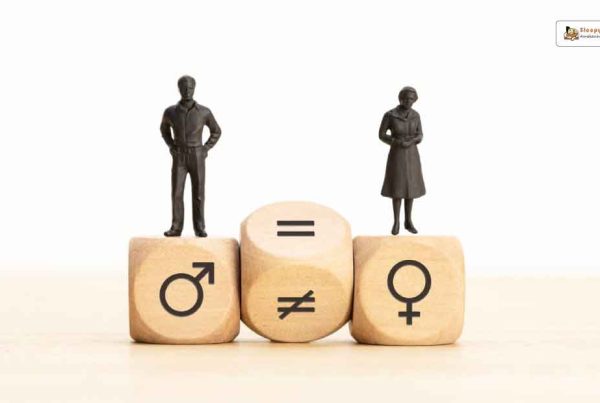Gender sensitization in Indian schools is crucial for creating an inclusive and fair society. By teaching students about gender equality and respect, we can help reduce discrimination and violence. While there has been progress, there is still a lot of work to be done to make sure schools are safe and supportive for all students.
Key Takeaways
- Gender sensitization in schools helps create a fairer and more inclusive society.
- Teaching students about gender equality can reduce discrimination and violence.
- There has been progress in gender sensitization, but more work is needed.
- Educators play a key role in promoting gender equality through training and teaching methods.
- Community and parental involvement are essential for the success of gender sensitization programs.
The Importance of Gender Sensitization in Indian Schools
Understanding Gender Sensitization
Gender sensitization means teaching people to understand and respect all genders. It helps students see beyond traditional roles and stereotypes. This understanding is crucial for creating a fair and equal society. When students learn about gender issues, they can better support each other and stand up against unfair treatment.
Historical Context of Gender Issues in Indian Education
In the past, Indian schools often treated boys and girls differently. Girls faced many barriers due to societal norms and institutional biases. These challenges made it hard for them to get the same education as boys. Over time, people have started to see the need for change, but there’s still a long way to go.
Current State of Gender Sensitization in Schools
Today, some schools in India are making efforts to teach students about gender equality. They are including gender-sensitive topics in their lessons and activities. However, not all schools have adopted these practices. More work is needed to ensure that every student learns about gender issues and how to address them.
Gender sensitization in schools is not just about teaching; it’s about changing mindsets and creating a supportive environment for all students.
Implementing Gender-Sensitive Curricula
Key Components of Gender-Sensitive Curricula
Gender-sensitive curricula aim to promote gender equality and challenge stereotypes. They include lessons that teach students about gender roles, equality, and respect. These curricula also encourage critical thinking about traditional gender norms and provide tools for students to question and move beyond discrimination.
Challenges in Implementation
Implementing gender-sensitive curricula faces several challenges. One major issue is resistance from those who believe that such practices might be discriminatory against binary or straight children. Additionally, there is often a lack of resources and trained educators to effectively deliver these lessons. Schools may also struggle with integrating these topics into an already packed syllabus.
Success Stories from Indian Schools
Despite the challenges, there are success stories from Indian schools that have effectively implemented gender-sensitive curricula. These schools have seen positive changes in student behavior and attitudes towards gender equality. For instance, some schools have reported a decrease in gender-based bullying and an increase in mutual respect among students.
Implementing gender-sensitive curricula is essential for creating a more equitable society. It helps students understand and respect different gender identities, fostering a more inclusive environment.
Role of Educators in Promoting Gender Equality
Educators play a crucial role in fostering gender equality in schools. They are at the forefront of implementing gender-sensitive curricula and creating an inclusive environment for all students. Effective strategies for promoting gender equality include training programs, incorporating gender sensitivity in teaching methods, and sharing success stories of educators who have made a difference.
Addressing Gender-Based Bullying and Violence
Identifying Gender-Based Bullying
Gender-based bullying in schools can take many forms, including verbal abuse, physical aggression, and social exclusion. Recognizing these behaviors early is crucial for creating a safe learning environment. A scoping review of research on bullying across the SAARC nations was conducted by Srinivasan et al. (2022). The review was limited to studies conducted between 2000 and 2020, highlighting the need for more recent data.
Preventive Measures and Policies
To prevent gender-based bullying, schools need to implement comprehensive policies. These should include:
- Clear definitions of what constitutes gender-based bullying.
- Training programs for teachers and staff to recognize and address bullying.
- Regular workshops for students to promote gender equality and respect.
Support Systems for Affected Students
Support systems are essential for students who have experienced gender-based bullying. Schools should offer:
- Counseling services to help students cope with the emotional impact.
- Peer support groups to provide a sense of community and understanding.
- Clear reporting mechanisms so students feel safe to report incidents.
Addressing gender-based bullying and violence in schools is not just about punishment but also about creating a supportive and inclusive environment for all students.
Community and Parental Involvement
Engaging Parents in Gender Sensitization
Parents play a crucial role in shaping their children’s views on gender. By increasing the value of girls, we can collectively contribute to a more equitable society. Schools can organize workshops and seminars to educate parents about the importance of gender equality and how they can support their children in breaking down gender stereotypes.
Community Programs and Initiatives
Community programs are essential for promoting gender sensitization beyond the classroom. Local organizations can collaborate with schools to create initiatives that encourage gender inclusivity. These programs can include community theater, sports events, and discussion groups that focus on gender issues.
Community involvement is key to ensuring that gender sensitization efforts are sustained and impactful.
Collaborations with NGOs and Government Bodies
Collaborating with NGOs and government bodies can amplify the reach and effectiveness of gender sensitization programs. These partnerships can provide schools with resources, training, and support to implement gender-sensitive curricula and policies. In certain areas, girls face restrictions on attending school or pursuing higher education, limiting their opportunities for personal growth and empowerment. Working together, these entities can help remove such barriers and promote a more inclusive educational environment.
Measuring the Impact of Gender Sensitization Programs
Assessment Tools and Metrics
To understand the effectiveness of gender sensitization programs, schools use various tools and metrics. These include surveys, interviews, and focus group discussions. Schools also track changes in student behavior and attitudes over time.
Long-Term Benefits for Students
Gender sensitization programs offer many long-term benefits. They help in reducing gender-based bullying and violence. Students learn to respect each other, leading to a more inclusive school environment. This, in turn, empowers women and promotes sustainable development.
Case Studies and Research Findings
Several case studies highlight the success of these programs. For example, one school reported a significant drop in gender-based bullying after implementing a gender-sensitive curriculum. Research findings also show that students in these programs are more likely to challenge gender stereotypes and advocate for equality.
Gender sensitization is essential for empowering women and furthering sustainable development. Communities can build a more equitable, successful society by focusing on these programs.
Future Directions for Gender Sensitization in Education
Policy Recommendations
To advance gender sensitization in education, strong policies are essential. Schools should implement gender-sensitive curricula and policies to promote gender equality. This involves challenging traditional gender roles and ensuring equal opportunities for all students.
Innovative Approaches and Technologies
New technologies and creative methods can make gender sensitization more effective. For example, interactive apps and online platforms can engage students in learning about gender issues. Virtual reality (VR) can also be used to create immersive experiences that highlight the importance of gender equality.
Global Perspectives and Best Practices
Looking at successful gender sensitization programs from around the world can provide valuable insights. Countries with advanced gender equality measures can offer models for effective practices. By adopting these best practices, Indian schools can better address gender concerns and create a more inclusive environment.
The present study seeks to explore the current landscape of women’s participation in higher education in Purba and Paschim Medinipur districts, with a view to understanding the progress and challenges in gender sensitization efforts.
In summary, the future of gender sensitization in education lies in strong policies, innovative technologies, and learning from global best practices.
Conclusion
In conclusion, while Indian schools have made strides in addressing gender issues, there is still a long way to go. Girls need the right tools and support to overcome discrimination and thrive. Implementing gender-sensitive curricula and policies can help promote equality and challenge stereotypes. Training teachers to handle gender-based bullying and violence is also crucial. By making these changes, we can create a more fair and inclusive society. It’s important for everyone, especially educators, to take actionable steps towards this goal. Together, we can empower girls and contribute to a more equal world.
Frequently Asked Questions
What is gender sensitization?
Gender sensitization is about understanding and being aware of gender differences, and addressing issues of gender inequality and discrimination.
Why is gender sensitization important in Indian schools?
It’s important because it helps create a fair environment where all students, regardless of gender, feel safe and respected. It also addresses and reduces gender-based discrimination.
What are the key components of a gender-sensitive curriculum?
A gender-sensitive curriculum includes lessons and activities that promote gender equality, challenge stereotypes, and encourage both boys and girls to participate equally.
How can teachers promote gender equality in the classroom?
Teachers can promote gender equality by treating all students fairly, using inclusive language, and incorporating gender-sensitive materials and activities into their lessons.
What measures can schools take to prevent gender-based bullying and violence?
Schools can implement strict anti-bullying policies, provide training for teachers and students on recognizing and addressing bullying, and create a supportive environment for all students.
How can parents and the community get involved in gender sensitization?
Parents and the community can participate in workshops and programs, support school initiatives, and encourage discussions about gender equality at home and in the community.







